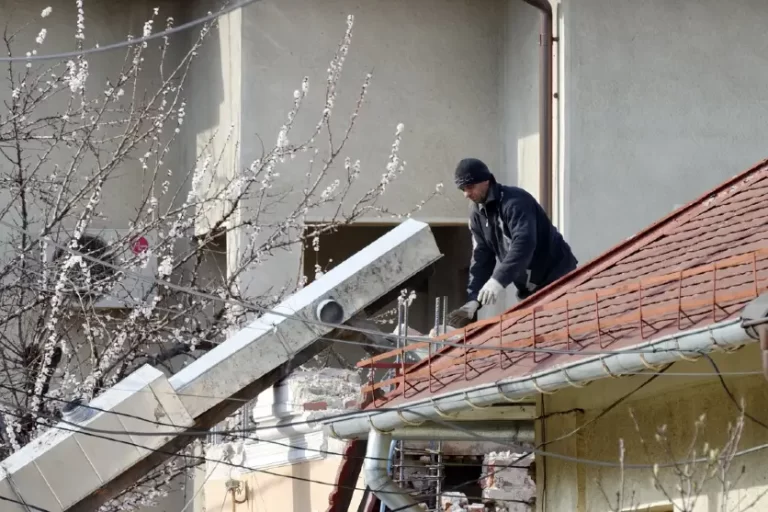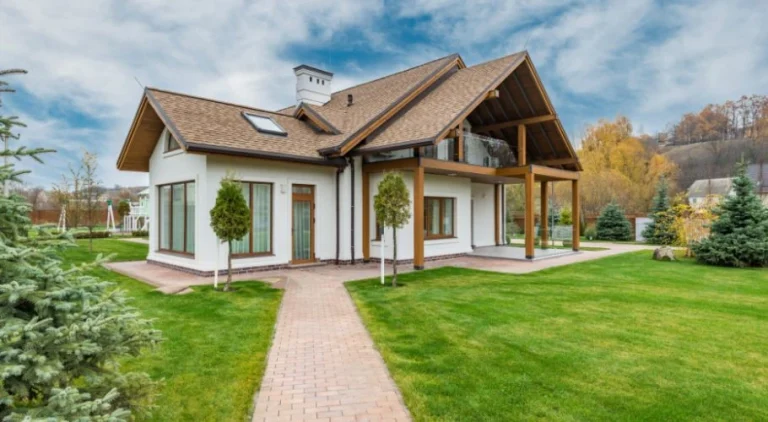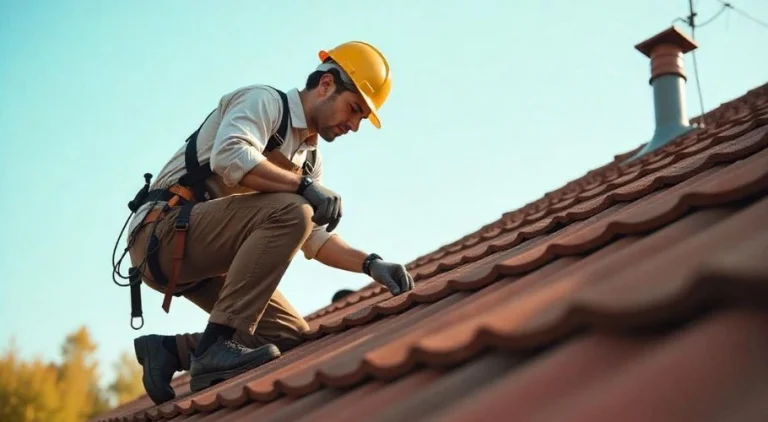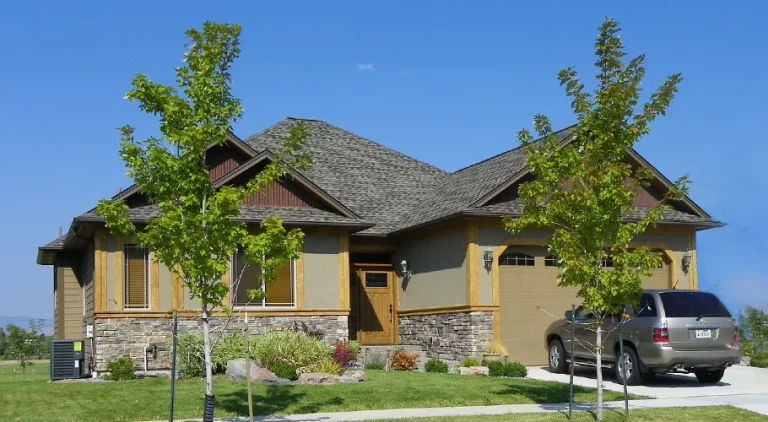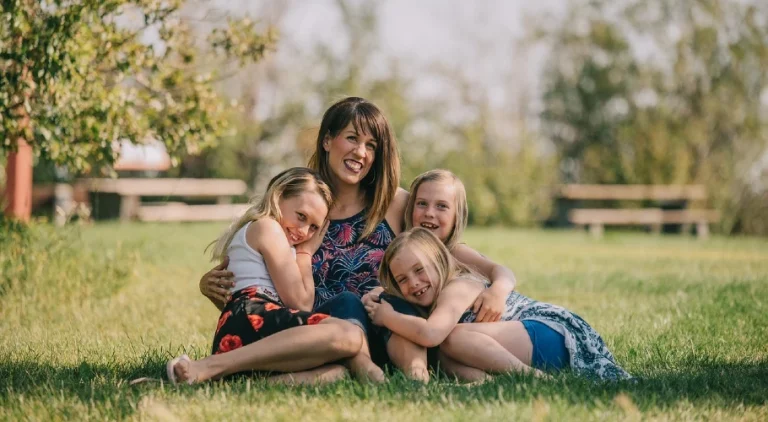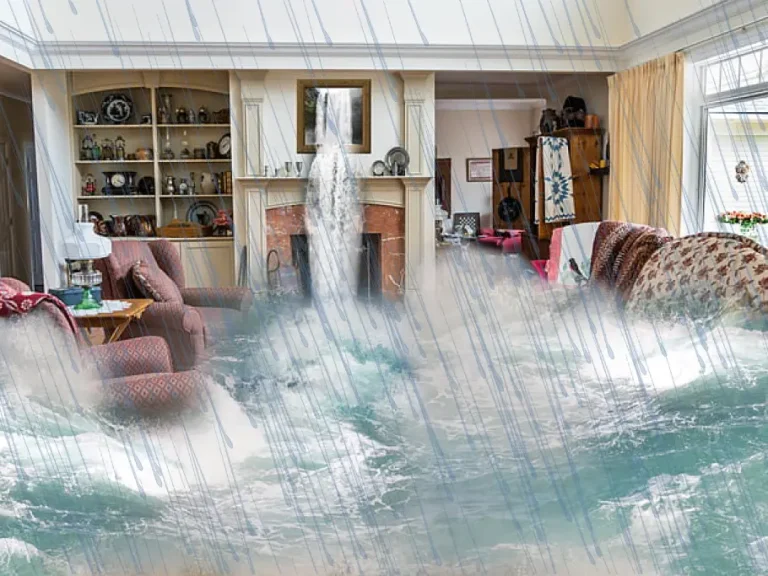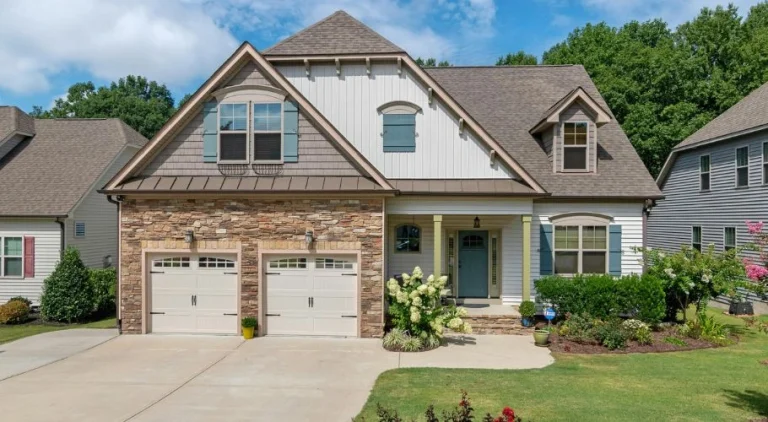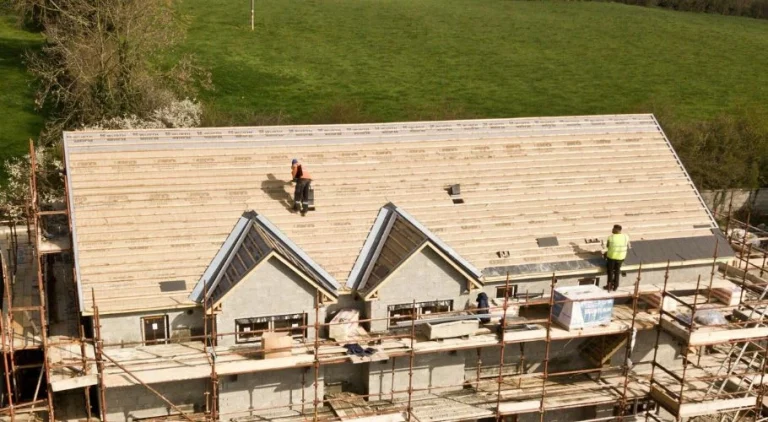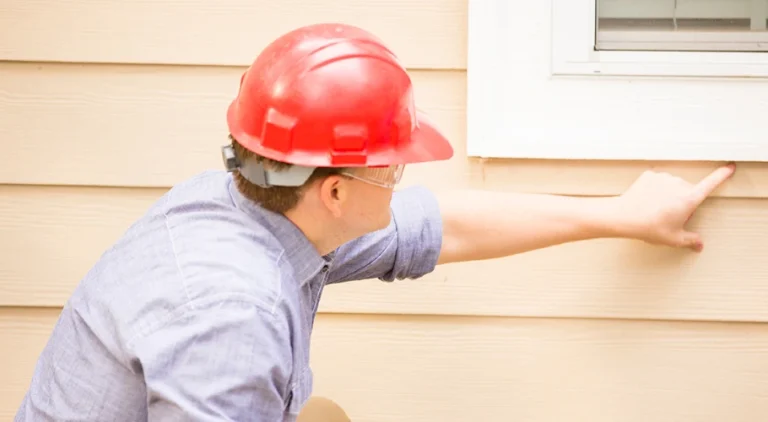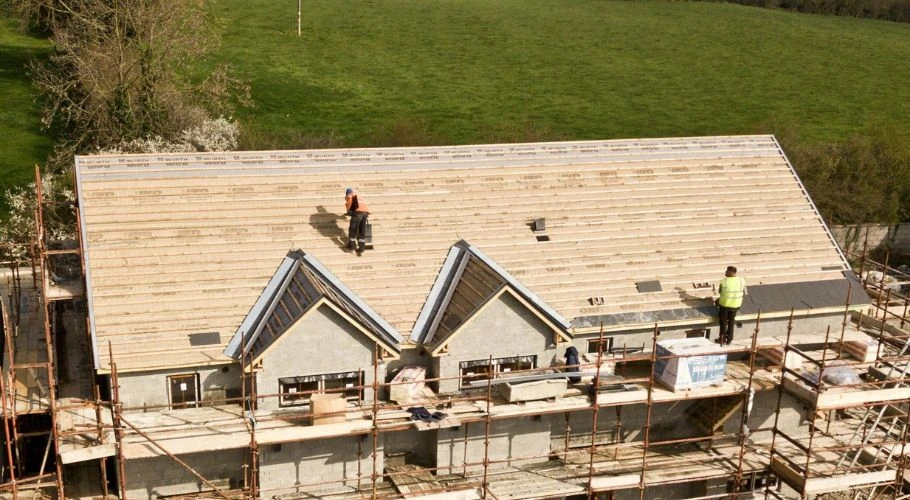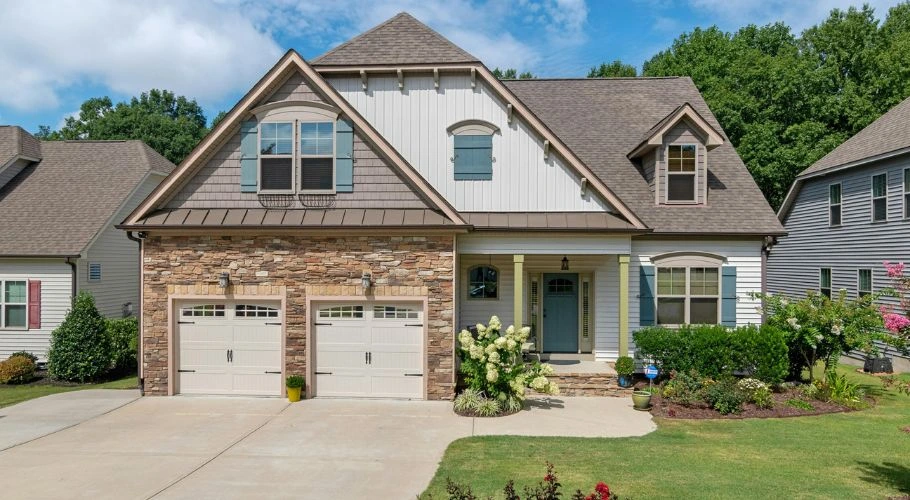
Home Exterior Color Palette Tips to Boost Your Curb Appeal
Your home exterior color palette can do wonders for your home’s curb appeal and the overall feel of your property. Choosing the right exterior paint color palette, however, can be a bit tricky. It requires more than just picking your favorite shades; you need to consider many different factors to make sure you’re giving your house the best possible color palette and combinations.
As roofing experts, Robbins Roofing knows just how important it is to boost your home’s exterior, be it through roofing updates or exterior paint colors. We want to help you achieve the perfect look for your home, so we’ve put together the essentials when it comes to exterior paint palettes, such as how to choose the right colors and helpful color scheme ideas for your upcoming home upgrade.
Related Article: The Role of Roof Insulation: A Complete Guide
Let’s get right into it!
The Importance of Your Home’s Exterior Paint Colors
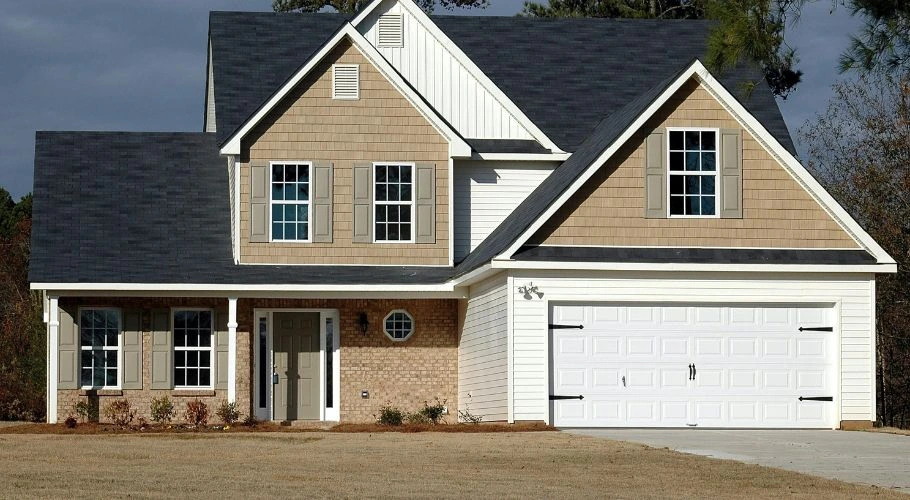
Think of your home’s exterior paint colors as your property’s face to the world, something that showcases its personality and distinct style. After all, it’s the first thing people notice when they walk past your property. Did you know a lot of people’s first impressions of those living inside a house are influenced by the house’s appearance itself? It’s all the more reason to select colors that truly reflect your taste and aesthetic preferences.
Additionally, a house with flattering exterior paint colors can really elevate your property value and leave a lasting impression on neighbors as well as potential buyers. With the perfect color palette, you can make your property stand out and create a warm and inviting atmosphere ideal for any home.
How to Choose Your Exterior House Colors
Consider Your Home’s Architectural Details
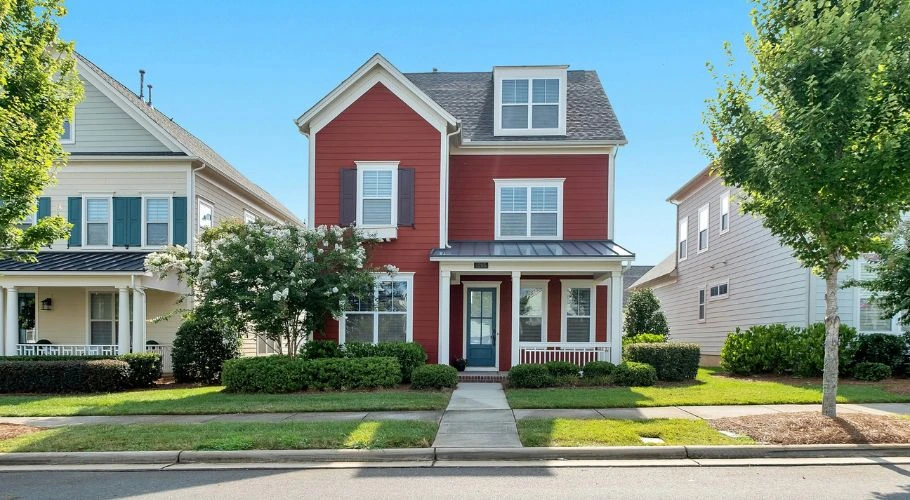
Consider the existing exterior elements of your home, such as brick and stone accents, the driveway, roofing system, siding, porch floor, trim, and front door. You can either highlight these features with the right color choices or make sure the rest of your exterior paint colors blend well with these existing elements.
For instance, a bold trim color can work well on a traditional style home, while a neutral color palette and white trim are ideal for homes with contemporary style architecture.
Choose Exterior Colors Depending on Your Local Climate
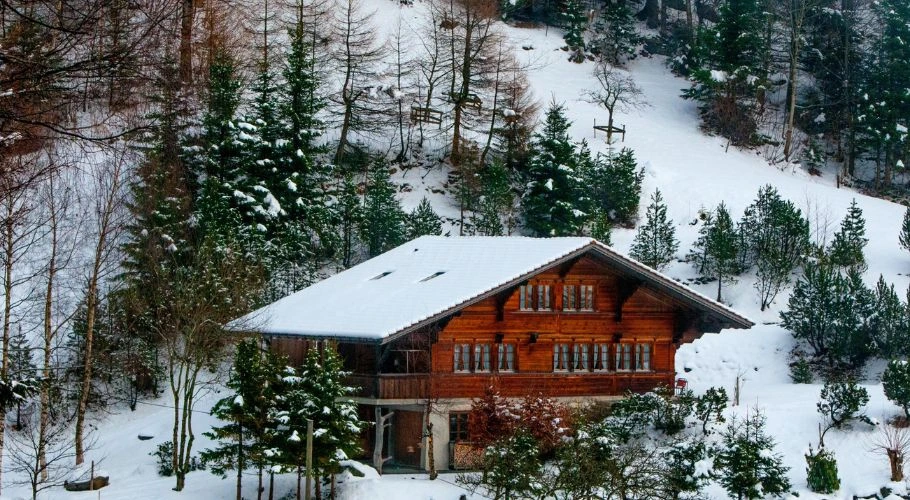
If you live in a hot region, you should opt for lighter paint colors like white, light blue, pale gray, and beige. These colors can reflect sunlight better, lessening the heat absorbed by your house and therefore making it easier for your HVAC system to regulate your indoor temperature.
In contrast, dark colors like black, dark green, navy blue, dark gray, charcoal gray, and brown are suitable for areas that experience cold weather. These dark colors soak up more heat and help warm your house up.
Observe Neighboring Houses and Surroundings
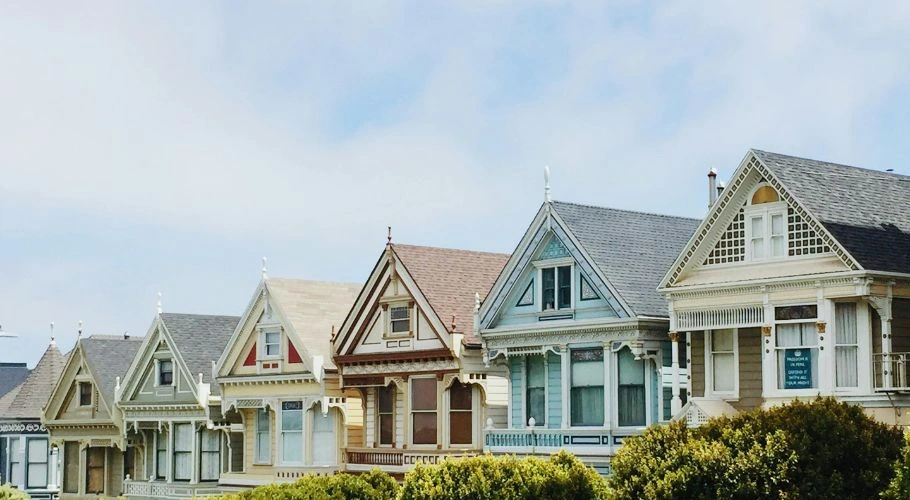
Take a walk around your neighborhood and observe the common color palette among neighboring houses. To blend in, you can opt for the same color, shade, or aesthetic as the majority of the neighborhood properties.
Alternatively, if you want your house to have a distinct appearance in order to stand out from the other houses, you can pick colors that contrast with the prominent color schemes in your area. This will effectively draw attention to your property and prevent your home from fading into the background.
Another consideration is the natural surroundings in your neighborhood. For example, if you’ve got tree-lined streets, earthy paint tones like brown and olive green can help your home blend seamlessly with your environment. If you live near the coast or shoreline, you can select cool colors like navy blue or warm colors like beige, tan, and light tan to complement the scenery well.
Take Note of Your Home’s Exterior Materials
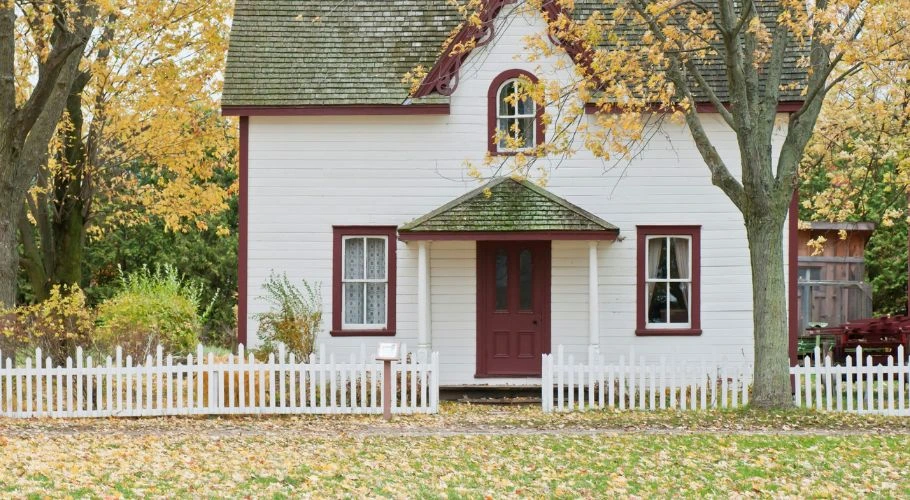
When choosing exterior paint colors, you shouldn’t forget to consider your home’s materials. Here’s a quick rundown of how to choose a paint color scheme based on various materials:
Brick
Brick is often characterized by natural tones of gray, red, and brown. To complement or contrast these tones, go for neutral colors like gray or muted green or bold colors like navy blue or hunter green.
Wood Siding
Given its warm and textured appearance, wood siding often looks great when painted with natural colors such as light blue, pale gray, and cream, which all do a great job of emphasizing the wood’s natural texture. Other options are navy blue and deep green for a more modern look.
Stone
If you have stone elements on your house’s exterior, you want colors that harmonize with the stone’s texture and color. So, it’s best to go for earthy tones like sage and taupe. You can also use charcoal or deep blue paint for a more dramatic effect.
Stucco
For stucco, consider sand or terracotta as well as lighter shades like pale gray and cream to brighten up its appearance. If you’re looking for contrast, darker colors like deep brown can be a great choice.
Vinyl Siding
Vinyl siding often looks great in classic colors like beige or bright white paint. You can also opt for something with more vibrancy, like soft blue or sage green.
Assess How Your Exterior Color Scheme Will Appear In Sunlight
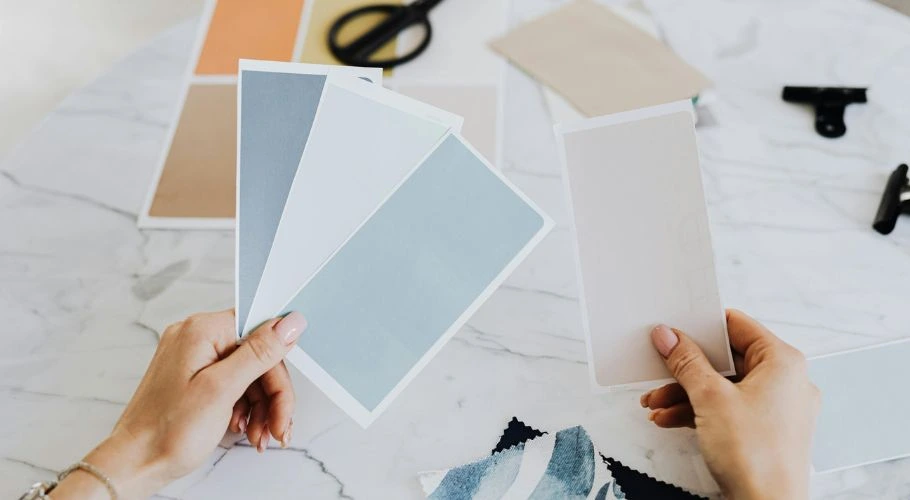
Paint colors can change depending on the lighting, so make sure to consider that before purchasing those paint cans. For starters, it’s important to understand the orientation of your house; south-facing homes often receive warm light, meaning cooler hues like light blue, mint, and navy are great options, while homes facing the north are likely to be bathed in cool and indirect light and thus warm colors are ideal to bring balance.
You should also consider factors like how light colors reflect more light. These reflections can then add subtle tones to your exterior, which can change how the paint appears. In contrast, dark paint colors tend to absorb more light, which deepens their color.
To determine what your chosen paint color will look like on your house’s exterior, we recommend getting paint samples and testing them out on a small area on your exterior wall. You can apply multiple paint samples and compare how each shade changes throughout the day. Then, once you’ve got an idea of what they look like, go ahead and take your best pick.
Think About Color Theory
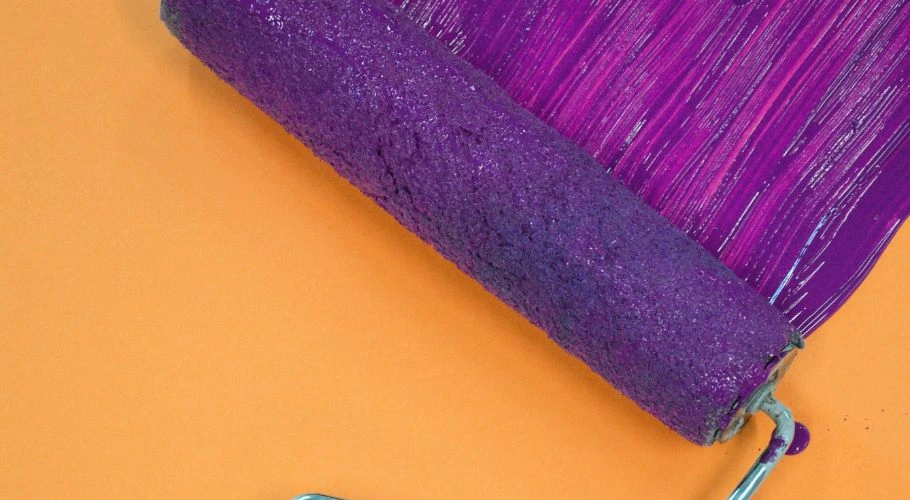
To come up with color combinations and palettes that work well together, you need to familiarize yourself with color theory. Basically, color theory refers to the way various colors appear together and how they affect the overall atmosphere and look of your property.
Here are some color theory tips to keep in mind:
Complementary Colors
Choose complementary colors for your home exterior if you’re looking to create a strong contrast. For example, green and red or orange and blue can help make your home’s architectural details stand out.
Here’s how you can apply them: Paint your front door blue and coat the trim with something warm-toned such as orange. This contrast can make your door the focal point of your home’s facade.
Monochromatic Colors
Monochromatic colors are basically the same colors but in different shades or variations. You often see these color combinations in contemporary or modern homes.
For example, if you choose light blue, medium blue, and navy blue for your exterior paint colors, you’re going to get a coherent and unified look, but with depth and variation. You can paint the walls of your exterior house with light blue paint and give the other exterior elements darker shades of blue.
Neutral Colors (with Pops of Color)
A neutral color palette is incredibly popular among minimalist and contemporary homes. Neutral colors include tones like white, light gray, beige, and cream. It gives homes a clean and straightforward appearance that many homeowners like to pair with simple lines and designs. However, if you want to add some personality to your neutral color palette, try adding bright colors as accents, such as bright white or yellow.
Analogous Colors
Similar to monochromatic colors, analogous colors are ones that are next to each other on the color wheel. This means they blend together seamlessly and create a harmonious look. An example of an analogous color combination is blue, blue-green, and green. Using these colors for house exteriors leaves homeowners with a smooth and calming appearance.
7. Ask for Advice From Professional Color Experts

Painting your house’s exterior is a big deal, so you want to make sure you’re doing it right from the get-go. If you find yourself overwhelmed by the need to choose exterior house colors, you can always contact professional color experts for assistance. You can tell them what look you’re going for—do you want the colors to serve as a warm welcome to visitors, or do you want something more subdued and subtle?—and they’ll help you determine exactly what the right exterior colors are for your home.
8 Striking Color Palette Ideas for Your Home’s Exterior
1. White, Black, and Green
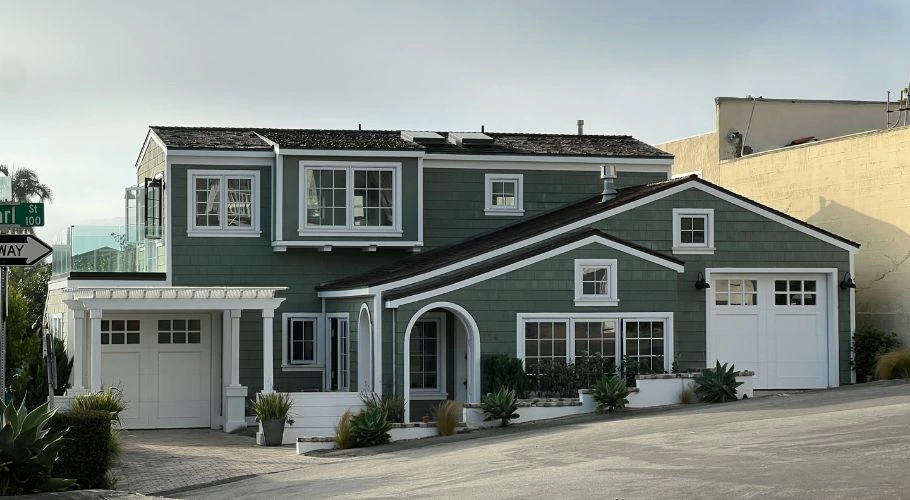
Want a fresh, timeless look for your home’s exterior? Take inspiration from the photo above! Green walls, black roofing, and white trim make for a perfect color combination that works well for most spaces, especially for homes in the country surrounded by nature. It’s an effective way to blend into the greenery while also standing out due to the attention-grabbing color composition.
2. Monochromatic Gray
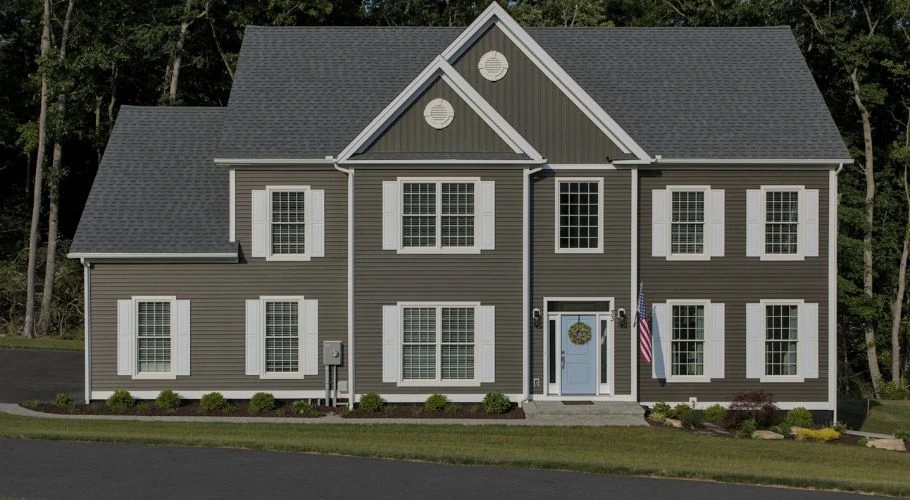
Monochrome palettes may sound plain and too simplistic to others, but when done right, your exterior house colors can stand out in your neighborhood. When you layer a different shade or hue of gray with each other, you create depth that instantly makes your home exterior visually appealing. For example, when you use the colors charcoal gray, pale gray, light gray together (plus a white trim that brings that classic look together), you end up with an exterior that’s not only sophisticated but also low-maintenance.
3. Modern White
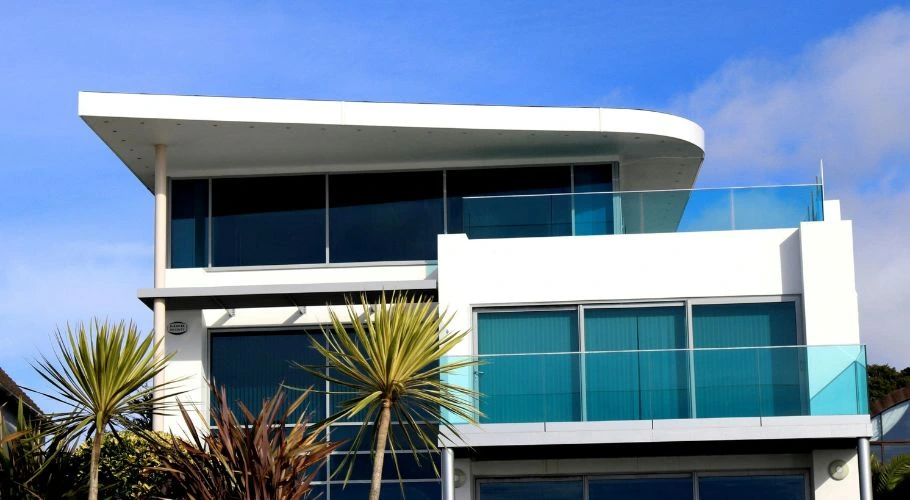
If you’ve seen any modern houses lately, then you’ve probably also seen the exterior house colors that tend to go with them. Of course, you can never go wrong with a clean, crisp shade of white paint, so even if you don’t have modern architecture, fresh white paint will look good with most home styles. Just a quick reminder, though—always add a splash of color alongside the white paint so your home exterior remains eye-catching. For example: incorporate a deep blue accent wall, bright white trim, or even color-tinted glass windows.
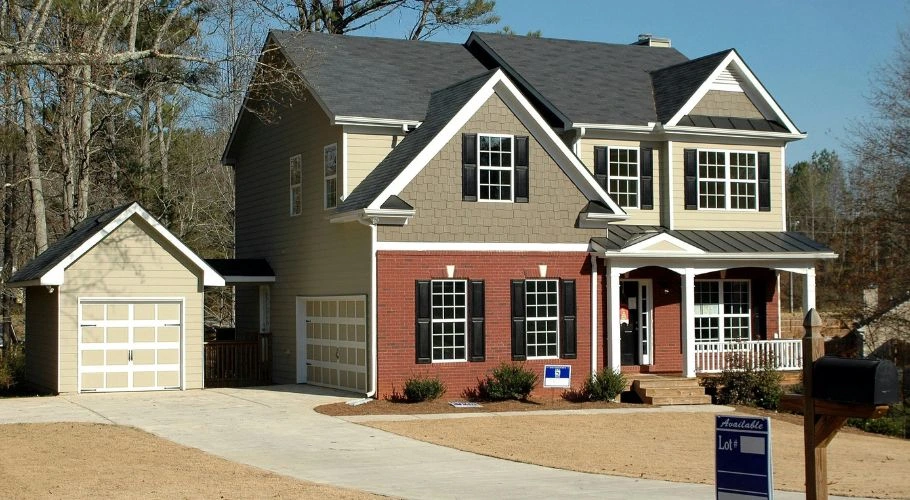
Most homeowners are reluctant to use more than two exterior house colors because they think it might look too busy or overwhelming. More than that, people don’t like playing around with uncommon color combinations—like gray, white, and red—worried that the colors will clash and leave their home exterior a mess. While these are valid concerns, the simple solution to avoid those potential problems is to pick the right shades. Gray, white, and red can work well together when they’re balanced, of the right shades, and well-placed (for example: the picture above).
5. Neutrals and Bricks
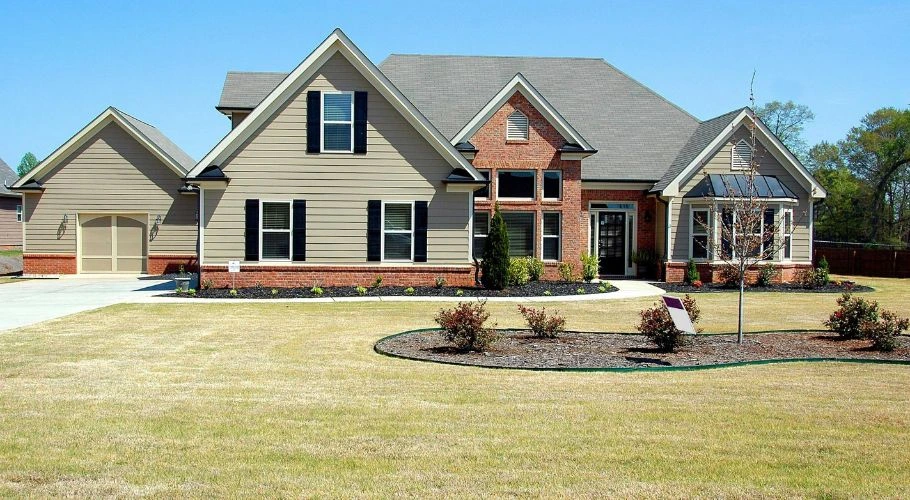
Improving your home’s curb appeal is more than just choosing the right exterior paint colors—it’s also about combining them with various materials and textures, like bricks. A top house exterior combination is neutral colors and bricks as it’s the perfect blend between soft, muted colors (neutrals) and strong character (bricks). Together, neutrals and bricks give off a welcoming and warm vibe that just screams hominess.
6. White, Gray, and Light Blue
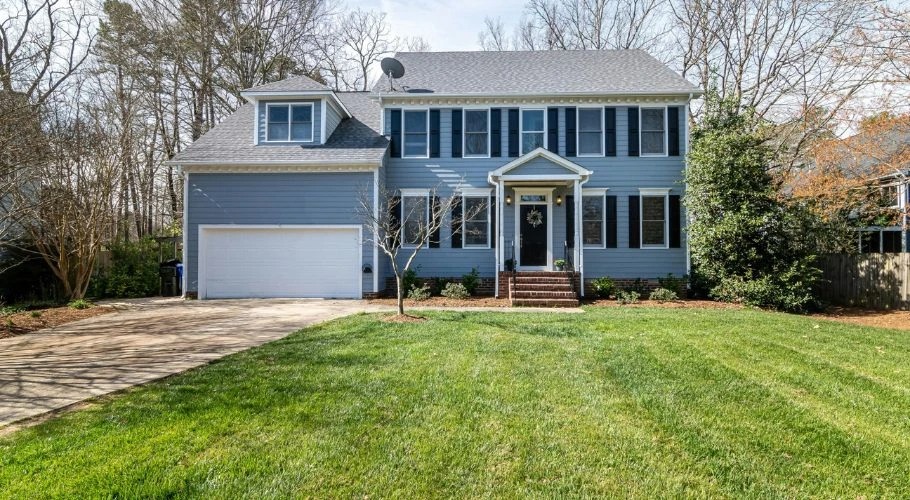
For a relaxing exterior paint color, consider the color palette of white, gray, and light blue. For example, the roofing can be painted light gray, the main exterior walls light blue, and white for minor elements like the trim and front door. Together, you get a calm, cohesive, and compelling exterior paint combination that’ll leave your property as memorable as it is welcoming.
7. Brown and Peach
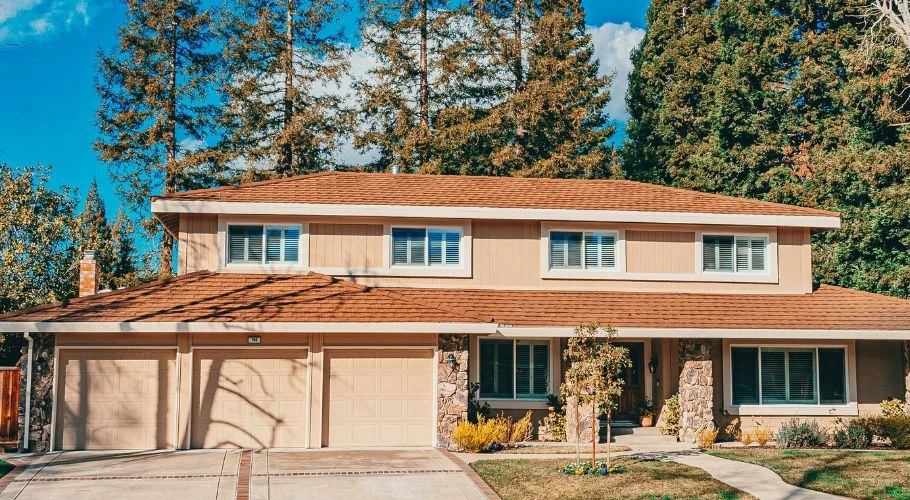
We talked about analogous colors (those next to each other on the color wheel) earlier, and a perfect example of this combination is brown and peach. Since these colors are similar to each other, they naturally blend well together, meaning you don’t have to worry about any colors clashing or making your exterior appear too over the top. Brown and peach also work well together because while they’re similar, they still contrast each other due to brown being a deeper, warmer color while peach is lighter and more relaxed.
8. Beige, Brown, and Wood
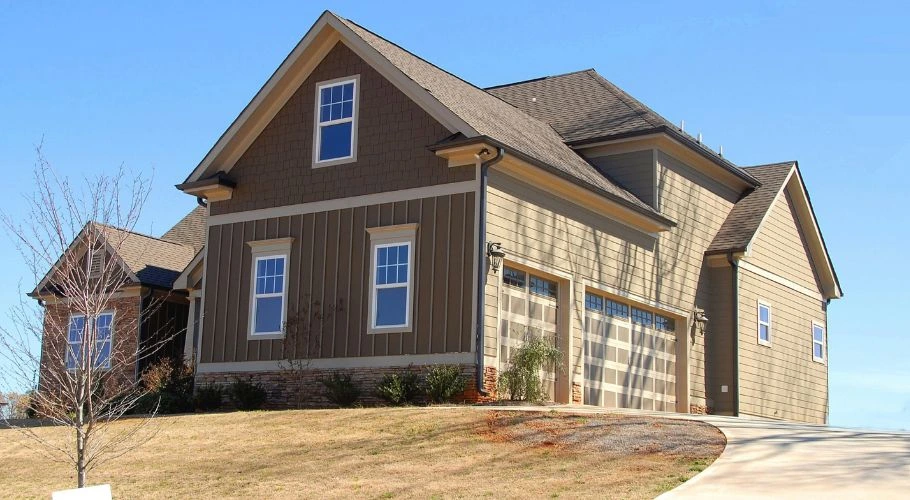
Here’s another house exterior combination involving materials: beige, brown, and wood. These appear cohesive and seamless because each color and material share similarities with the other, but the differing shades and textures provide the contrast it needs to be visually interesting. So, if you’re looking for something simple yet striking, this combination may just be the way to go.
Frequently Asked Questions (FAQs) About Home Exterior Color Palette Options
Is there an app to see exterior house colors?
Yes, there are quite a few. You can download applications like Sherwin Williams’ ColorSnap and Benjamin Moore’s Color Portfolio. Check them out so you get an idea of what specific exterior paint colors look like on your home before buying any paint.
What is the new trend in exterior house colors?
Minimalism is a growing trend in the design industry, including exterior house colors and designs. As a result, neutrals and muted tones have become some of the top favorites over the past few years. However, most homeowners like to complement these colors with something bolder and vibrant for that extra character and charm.
Why do many painters recommend Benjamin Moore and Sherwin Williams paint?
Many painters recommend these brands because they’re known for having high-quality paints with excellent coverage. Benjamin Moore and Sherwin Williams paint typically require fewer coats to achieve great results and last for a long time.
Planning to Upgrade Your Home’s Exterior? Call Robbins Roofing for a Refined Roof!
Robbins Roofing offers residential roofing OKC services for homeowners looking to enhance their home’s curb appeal. Alongside upgrading your home’s exterior paint color, giving your roofing a makeover can also boost your property’s overall appearance and charm.
Visit our website or contact us today to get started!

